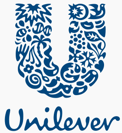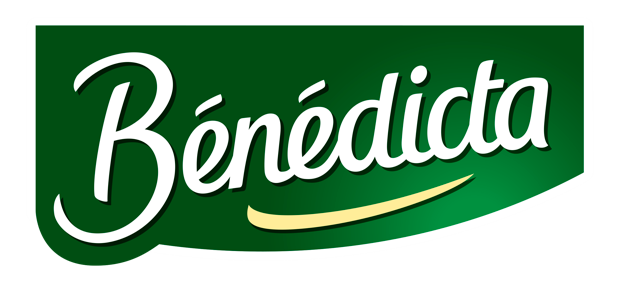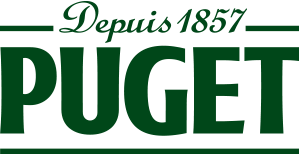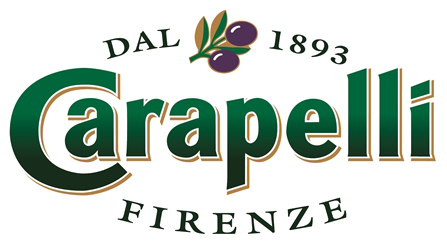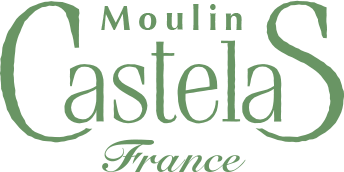Summary
The world olive oil market remains concentrated in the Mediterranean region, with Spain the main producer, accounting for over 40% of global output. Consumption has shown a long-term upward trend, with significant growth over the last three decades, although the pace has slowed since the late 2000s. France plays primarily a consumer rather than a producer role, importing 95% of its olive oil and posting a trade deficit with imports valued at 419.8 million euros against exports worth 40.9 million euros in 2022. French consumers prefer high-quality products, extra virgin olive oil being the most popular. The organic olive oil segment is growing rapidly, particularly in France, where 36% of olive groves will be certified organic by 2021. COVID-19 has had a significant impact on the industry, with producers concerned about the long-term effects on the market.
Market share by value in France reveals a preference for brands like Puget, but private labels hold a combined majority with 41% of the market by 2023.
The French olive oil market: a consumer-dominated landscape against a backdrop of growing import dependency and a trend towards organic farming
In the French olive oil market, consumer preference clearly drives market trends. France, which is primarily a market of olive oil consumers rather than producers, has seen consumption multiply significantly in the space of two decades. Although domestic production represents only a small proportion of national consumption, French consumers have embraced olive oil not only as a staple food, but also as a luxury, quality product.
Interestingly, the French market is driven not only by the volume of consumption, but also by the nature of that consumption. Extra virgin olive oil, revered for its quality and health benefits, is the favorite of French consumers. Based on sales figures, the French olive oil market is valued at several hundred million euros, representing a significant share of the overall oil market in terms of value. It is therefore a robust market with high economic stakes for the various players.
Despite the significant share of imports, France retains a preference for authenticity and Mediterranean roots when it comes to olive oil, placing great importance on the taste, aroma and health benefits associated with its consumption. The market has grown steadily over the last few decades, despite some fluctuations. The preference for olive oil is also reflected geographically and demographically, with rural communities showing higher consumption than sparsely populated towns.the preference for olive oil is also evident geographically and demographically, with rural communities showing higher consumption than densely populated towns, and higher income brackets representing a considerable segment of consumers. One- and two-person households are the largest consumer group, and in the space of a year, the average household purchased several liters of olive oil.
Organic olive oil has made impressive inroads into the market, reflecting a wider global trend. France, in particular, has been at the forefront of this development, holding a substantial share of Europe's organically grown olive groves. This move towards organic production has been facilitated by EU subsidies, suggesting a promising avenue for market differentiation and segmentation in the French olive oil landscape. Despite these preferences and changes, the French olive oil market has not been immune to external shocks.
The Covid-19 pandemic caused great concern among olive oil producers, with strong apprehensions as to the long-term consequences on the market, following a period of strong growth. consequences on the market, after a year marked by heavy revenue losses and operational activities hampered by containment.
Key players shaping the French olive oil landscape
The French olive oil market is made up of a large number of companies, ranging from multinational food giants to specialized premium producers, each bringing unique flavors and business practices to the table. Here's a look at some of the big names dominating the conversation around olive oil in France.
Diversified food groups lead the market
- Lesieur and Bunge lead the pack. These companies have a broad portfolio of food products, and their olive oil brands benefit from their extensive distribution networks and economies of scale.
- Unilever, known for its wide range of consumer goods, makes a significant contribution to the olive oil market thanks to its well-established supply chains.
- Deoleo, the world's leading olive oil specialist, is committed to tradition and innovation.
- Avril is firmly rooted in the European agri-food landscape, and is constantly expanding its field of action.
- Mediaco also contributes to the olive oil scene by focusing on both production and distribution.
- Olive and olive oil specialists
- Puget, a brand with a rich history that resonates with the French consumer's love of tradition and quality.
- Carapelli has stood the test of time, offering a range of olive oils that echo the taste and purity sought by customers. Tramier completes this group, offering a blend of experience and artisan know-how in olive oil production.
The essence of top-quality production
- Oliviers & Co and Moulin de Margier, which champion the concept of exclusivity and luxury in olive oil. These brands delight in producing top-of-the-range products for a clientele that appreciates the subtleties of a terroir taste and the story behind each bottle. Castelas Mill, like its counterparts, emphasizes the value of high-quality, locally-sourced olives, creating oils as rich in character as they are in flavor.
Each player, from giants to artisan mills, has carved out its own niche in the French market, contributing to a complex and fascinating olive oil landscape that continues to evolve in line with consumer preferences and market dynamics. Together, these brands form the backbone of an industry as diverse as the varieties of olives they press.
to understand this market
Detailed content
 Inforamtion
Inforamtion
- Number of pages : 30 pages
- Format : Digital and PDF versions
- Last update : 20/11/2023
 Summary and extracts
Summary and extracts
1 Market overview
1.1 Market overview and definition
The olive is a typical fruit of the Mediterranean region, consumed in two forms: either as a condiment, or table olive, or asolive oil after pressing the fruit.
Olive oil is obtained by crushing fresh fruit into a paste, then filtering, centrifuging and heating (or not) the paste to extract the oil. Itis one of the main ingredients in the diets of Mediterranean countries, and is mainly used in the preparation of salads and as a cooking fat . It is also used in cosmetics on a more anecdotal basis.
The global olive oil market is highly concentrated in the Mediterranean region, particularly Spain, Greece and Italy. Spain is the world's leading producer, accounting for 40% of global output. On a global scale, annual market growth is around 3%.
France, despite a favorable climate in its southern regions, is finding it extremely difficult to hold its own against foreign competition.according to COI (Conseil Oléicole International) data, France supplies almost all the products consumed in the country. However, growers are trying to adapt to new trends, notably with organic farming, and to differentiate themselves from others through protected and controlled designations of origin.
The olive oil market in France is growing rapidly, and is primarily a consumer market. Indeed, France, which imports over 95% of its olive oil, has seen its consumption multiply by 5 in less than 20 years.
The French are particularly fond of olive oil, not so much for its quantity, but rather for the way it is consumed. In France, as much for its price as for its virtues (anti-cholesterol, dietary...), olive oil is considered a relatively luxurious product, and its quality is often of the highest order. In fact, the most popular type of olive oil is extra virgin .
1.2 The world market is dominated by the Mediterranean
Main olive oil producing and consuming countries World, ****, thousands of tons Source: ****
The biggest consumers of olive oil are the countries of the Mediterranean basin. Italy is in first place, with more than ***,*** tonnes of olive oil consumed over the ****-** period (***).
Europe, ****, in kilograms Source: ****
Production is largely handled by ...
1.3 French olives: a market for consumers rather than producers
Consumption largely imported
Olive oil imports and exports France, ****, millions of euros Source: ****
France's olive oil trade balance is largely in deficit. In ****, France imported the equivalent of ***.* million euros, while exporting just **.* million euros.
Main olive oil suppliers France, ****, in Source: ****
On the import side, France is highly dependent on ...
1.4 The impact of Covid-19 on the olive oil market
Olive growers and oil producers have been hard hit in almost all olive-growing regions. In Spain, Italy, Greece, Portugal and Tunisia, France, Turkey, Croatia, Lebanon, Syria - in particular, regions where olive growing and olive oil production form an important part of the economy and cultures.
In the survey whose results ...
2 Demand analysis
2.1 French consumer profile
Geography
The following graph shows the respective weight of households consuming olive oil in supermarkets, by size and type of town:
Weight in number of households buying olive oil in France France, ****, in Source: ****
Geography appears to play a relatively important role in olive oil consumption. Indeed, this product is apparently ...
2.2 Organic olive oil on the rise
Some producers offer light olive oil ranges , or even organic olive oils. The organic olive oil sector is booming. Tasting olive oils in the same way as wine is becoming increasingly popular. Oliviers & Co has positioned itself at the top end of this organic olive oil trend, distributing over twenty harvests ...
2.3 French preferences
In terms of preferences, the Puget brand tops the sales rankings, making it the most popular brand with the French.
Olive oil market share by value France, ****, in Source: ****
Nevertheless, private labels together hold the majority of market share (***). Lesieur holds **.*% and Carapelli **.*%.
3 Market structure
3.1 Olive industry value chain
Source: ****
The diagram above illustrates the olive oil production chain, from the olive grove to the end consumer. Several players may be involved in the production process: supermarkets, mills and cooperatives, and olive growers.
3.2 A highly heterogeneous national production
As shown in the diagram below, most of France's olive oil production takes place in the PACA region (***), which accounts for **% of the French total.
Breakdown of regional production in France France, ****, in tons Source: ****
The remainder of production comes from the Occitanie (***) regions.
As the following graph shows, French olive ...
3.3 A protean cast
Olive oil is marketed by the mills through four different channels:
direct sales to consumers sales to distributors bulk sales (***) e-commerce
E-commerce developed during the pandemic, but has now become an essential distribution lever.
Impact of the war in Ukraine
The current economic context (***) has a significant influence on the consumption ...
4 Offer analysis
4.1 Olive oil typology
There are four different types of olive oil:
Extravirgin olive oil: this is the best quality olive oil you can find. It contains a very low level of acidity (***). It has a strong taste and aroma. Virgin olive oil: this is a superior quality virgin olive oil, but with an aroma ...
4.2 Wholesale oil prices fluctuate with harvests
Trends in olive oil prices World, ****-****, in dollars Source: ****
The graph above shows world prices for extra-virgin olive oil. These price variations, which depend on many factors, are reflected in the prices paid by the end consumer. This volatility is due to the fact that olive oil production depends on ...
4.3 Retail oil prices for French consumers
Olive oil price chart
We distinguish between four different types of oil: entry-level, private label, specialty and premium. For the most part, we'll be relying on the carrefour websitewebsite, and compare prices per liter. Prices are those observed in November **** on the sites indicated:
entry-level oils : leclerc Eco+ olive oilat €*.**/L; carrefour ...
4.4 Moving upmarket in the oil market
Producers of bottled olive oil are trying to promote the authenticity of their oil and its Mediterranean "terroir" heritage.
With pressure on the olive oil supply, despite the slight decline in French demand, some producers are offering upmarket products with supposedly superior quality to their competitors.
Olive oil producers are therefore ...
5 Regulations
5.1 Strict oil regulations for information purposes
Codified labelling
In the European Union (***), the sale of olive oil to end consumers is highly regulated, particularly with regard to labeling and product information. The EU provides a legal framework through three regulations currently in force:
Commission Implementing Regulation (***) No. **/**** of January **, **** on marketing standards for olive oil. Commission Regulation ...
6 Positioning the players
6.1 Segmentation
- Lesieur (Avril Groupe)
- Bunge
- Unilever
- Deoleo
- Avril Groupe
- Benedicta (groupe Kraft Heinz)
- Puget Lesieur (Avril Groupe)
- Carapelli
- Tramier
- Oliviers & Co
- Moulin Castelas
- Moulin Margier (Domaine La Michelle)
- Bioplanete Huilerie Moog
- Kalios
- Costa d'Oro (Avril Groupe)
 List of charts
List of charts
- Main olive oil producing countries (forecast)
- Estimated olive oil consumption
- Olive oil consumption
- Olive oil imports and exports
- Main destinations for olive oil exports
All our studies are available online in PDF format
Take a look at an example of our research on another market!
Latest news
Companies quoted in this study
This study contains a complete overview of the companies in the market, with the latest figures and news for each company. :
 Choosing this study means :
Choosing this study means :
Access to more than 35 hours of work
Our studies are the result of over 35 hours of research and analysis. Using our studies allows you to devote more time and added value to your projects.
Benefit from 6 years' experience and over 1,500 industry reports already produced
Our expertise enables us to produce comprehensive studies in all sectors, including niche and emerging markets.
Our know-how and methodology enable us to produce reports that offer unique value for money.
Access to several thousand articles and paid-for data
Businesscoot has access to all the paid economic press as well as exclusive databases to carry out its market research (over 30,000 articles and private sources).
To enhance our research, our analysts also use web indicators (semrush, trends, etc.) to identify market trends and company strategies. (Consult our paying sources)
Guaranteed support after your purchase
A team dedicated to after-sales service, to guarantee you a high level of satisfaction. +44 238 097 0676
A digital format designed for our users
Not only do you have access to a PDF, but also to a digital version designed for our customers. This version gives you access to sources, data in Excel format and graphics. The content of the study can therefore be easily retrieved and adapted for your specific needs.
 Our offers :
Our offers :
the olive oil market | France
- What are the figures on the size and growth of the market?
- What is driving the growth of the market and its evolution?
- What is the positioning of companies in the value chain?
- Data from several dozen databases
Pack 5 études (-15%) France
- 5 études au prix de 75,6€HT par étude à choisir parmi nos 800 titres sur le catalogue France pendant 12 mois
- Conservez -15% sur les études supplémentaires achetées
- Choisissez le remboursement des crédits non consommés au terme des 12 mois (durée du pack)
Consultez les conditions du pack et de remboursement des crédits non consommés.





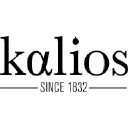 Kalios - 15/10/2023
Kalios - 15/10/2023
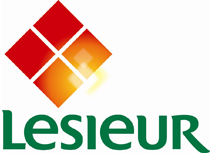 Meatless meals: Lesieur puts its plant-based cooking at the heart of meals - 08/10/2023
Meatless meals: Lesieur puts its plant-based cooking at the heart of meals - 08/10/2023
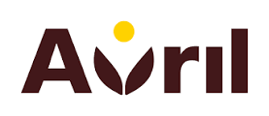 Hari&Co joins the Avril Group - 08/10/2023
Hari&Co joins the Avril Group - 08/10/2023
 Bunge acquires Viterra to form an agricultural trading giant - 14/06/2023
Bunge acquires Viterra to form an agricultural trading giant - 14/06/2023
